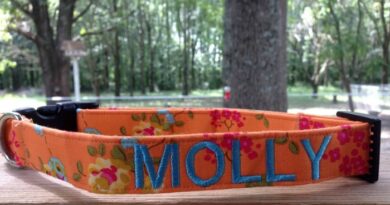What Is Good Exercise for My Dog
Exercise is a cornerstone of health for dogs, just as it is for humans. Regular physical activity is crucial for your canine companion’s physical health, mental stimulation, and overall well-being. However, there are a wealth of options when it comes to physical activity.
Different breeds, sizes, and ages of dogs have varying exercise needs, but all dogs benefit from a consistent exercise regimen. The right amount and type of exercise can help prevent behavioural problems, keep weight in check, and improve your dog’s mood and lifespan.
Photo by Chepte from Pexels.com
Types of Exercises for Dogs
Walking
Walking is the most basic and essential exercise for dogs of all breeds and ages. It provides sensory stimulation, physical activity, and an opportunity for bonding.
The length and intensity of walks can vary based on your dog’s breed, age, and health. For instance, a young, energetic Labrador might require longer and more vigorous walks compared to an older, smaller breed like a Mini Cavoodle.
Pros:
- Accessibility: Almost anyone can take their dog for a walk, requiring no special equipment or location.
- Health: Regular walks help maintain a healthy weight and improve cardiovascular health.
- Mental Stimulation: Walks provide sensory stimulation from the environment, which is crucial for mental health.
Cons:
- Monotony: Without variation, walks can become tedious for both the dog and the owner.
- Safety Concerns: Walking in areas with traffic, aggressive animals, or harsh weather poses risks.
- Physical Limitations: Not all dogs or owners can sustain long or vigorous walks, especially in poor health.
Running
Running is suitable for dogs with high energy levels and those that are physically built for endurance.
Breeds like German Shepherds, Border Collies, and Huskies often enjoy running alongside their owners. However, it’s crucial to build up endurance gradually and avoid overexertion, especially in hot weather.
Pros:
- Energy Release: Great for high-energy breeds that need more intense exercise. If doing high-intense running with your dog, Wearing No Rash Guards can help with that chafing.
- Physical Fitness: Enhances cardiovascular fitness and endurance for both the dog and the owner.
- Behavioral Benefits: Helps reduce hyperactivity and destructive behaviour by using up excess energy.
Cons:
- Joint Stress: Running can be hard on the joints, especially for larger breeds or dogs with existing joint issues.
- Overexertion: There’s a risk of pushing the dog too hard, especially in hot weather or without proper conditioning.
- Breed Specificity: Not all breeds are built for long-distance running, and some may find it unenjoyable or stressful.
Fetch
Fetch combines exercise with play, making it a fun way to keep your dog active. It’s excellent for cardiovascular health and can be adapted to the space available, from a backyard to a local park. Vary the objects thrown to keep the game interesting and engage different muscle groups.
Pros:
- Interactive: Engages the dog in play while also providing exercise.
- Training Opportunity: Can be used to practise commands and improve dog-owner communication.
- Adaptable: Can be played in various settings, adjusting for space and intensity.
Cons:
- Repetition: Some dogs might lose interest if the game doesn’t vary.
- Risk of Injury: Overexcitement or a slippery surface can lead to accidents.
- Obsessiveness: Some dogs may develop an unhealthy obsession with the object being thrown.
Agility Training
Agility training is a dynamic and fun way to exercise dogs that enjoy mental and physical challenges. It involves navigating a course with various obstacles and can significantly enhance a dog’s flexibility, coordination, and obedience. This is particularly beneficial for intelligent and high-energy breeds.
Pros:
- Mental and Physical Stimulation: Provides a comprehensive workout engaging both mind and body.
- Bonding: Builds deeper understanding and communication between dog and owner.
- Confidence Building: Helps shy or fearful dogs gain confidence through mastery of tasks.
Cons:
- Accessibility: Requires access to equipment and possibly training space.
- Time Consuming: Learning and practising agility courses demand a significant time investment.
- Physical Demands: Not suitable for all dogs, particularly those with health issues or advanced age.
Swimming
Swimming is a fantastic low-impact exercise suitable for dogs with joint issues or those recovering from surgery. It’s also a great way to cool down on hot days. Not all dogs are natural swimmers, so introduce water gradually and always supervise your pet during swim time.
Pros:
- Low Impact: Excellent for dogs with joint problems or those recovering from injury.
- Cooling: Provides a way to exercise while staying cool, especially in hot climates.
- Buoyancy: Supports the body, allowing dogs who struggle with traditional exercise to participate.
Cons:
- Not for All: Some dogs dislike water or are not natural swimmers.
- Safety: Requires constant supervision and possibly a life vest.
- Availability: Depending on location, finding a safe and suitable place to swim might be challenging.
Mental Stimulation Games
Exercise isn’t just about physical activity; mental stimulation is equally important. Games that challenge your dog’s mind, like hide-and-seek, puzzle toys, or obedience training, can tire them out and satisfy their cognitive needs.
Pros:
- Versatility: Can be practised indoors and adapted to any space.
- Cognitive Benefits: Helps prevent cognitive decline and keeps dogs mentally sharp.
- Behavioural Improvement: Engages the dog’s mind, reducing boredom and associated destructive behaviours.
Cons:
- Owner Involvement: Requires creativity and participation from the owner.
- Variety Needed: Dogs may become bored with repetitive games or puzzles.
- May Not Suffice Alone: While mentally stimulating, these games might not provide enough physical exercise for some dogs.
Breed and Age Specifics
Every dog is unique, and their exercise needs vary significantly based on factors like breed, age, and individual health.
For puppies, focus on short, frequent play sessions. Puppies have lots of energy but also need plenty of rest to grow.
Most adult dogs require regular daily exercise. The intensity and duration will vary widely among breeds. Energetic breeds might need more than an hour of vigorous exercise daily, while smaller or less active breeds may do well with shorter, more frequent walks.
For senior dogs, exercise remains important, but should be adjusted to accommodate their slower pace and potential health issues. Gentle walks and play sessions can help maintain muscle tone and joint flexibility.
Safety and Health
Before starting any new exercise regimen, consult with a veterinarian, especially if your dog has health issues. Here are some safety tips:
- Monitor the Weather: Avoid exercising in extreme temperatures. Dogs can suffer from heatstroke or frostbite.
- Check the Terrain: Be mindful of where you’re walking or running. Hot pavement can burn paws, and uneven terrain can be hazardous.
- Hydration: Always provide fresh water before, during, and after exercise.
- Start Slow: Gradually increase the intensity and duration of exercise, especially if your dog is not used to being active.
Implementation Tips
To effectively incorporate exercise into your dog’s routine, consider the following:
- Consistency is Key: Regular exercise is more beneficial than intermittent bouts of activity.
- Vary the Activities: Keep your dog engaged by varying the types of exercise.
- Involve the Whole Family: Exercise can be an opportunity for everyone to bond with the pet.
- Watch for Signs of Fatigue: Be attentive to your dog’s body language and signs of tiredness or discomfort.
Conclusion
Exercise is a vital part of a dog’s life. It keeps them healthy, happy, and well-behaved. By understanding your dog’s unique needs and varying their activities, you can ensure that they get the right amount and type of exercise.
Always prioritise safety and consult with professionals when necessary. With the right approach, you can enjoy many active, joyful years with your canine companion.









